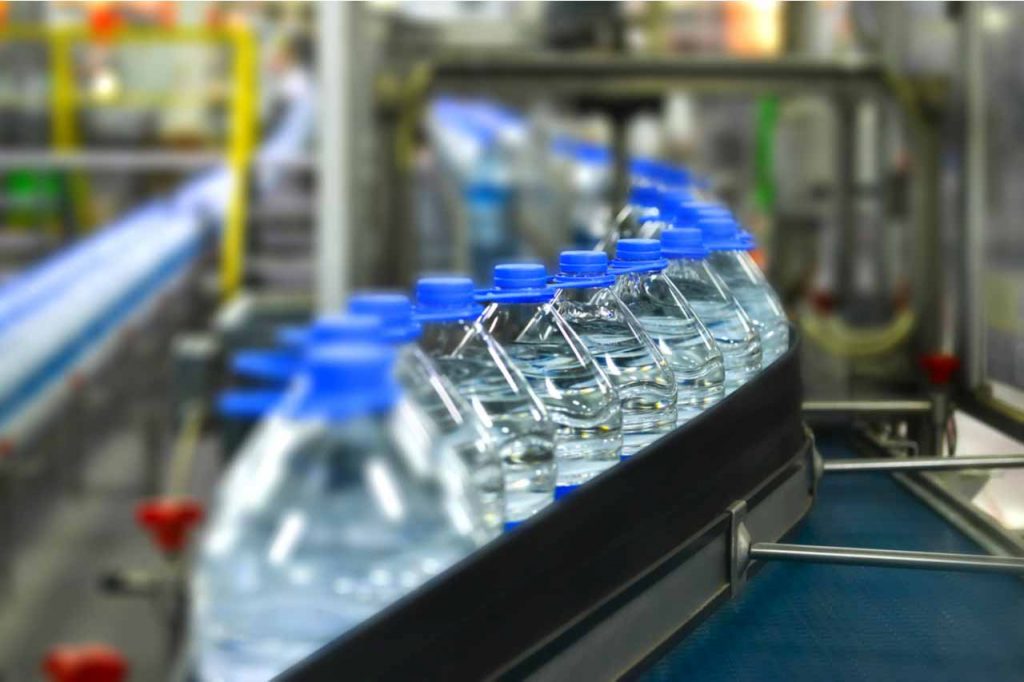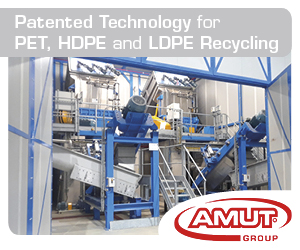
An industry analyst recently noted that low virgin resin pricing means challenges for ensuring end users choose to use recycled plastic. | batuhan taskinkaya/Shutterstock
The coronavirus pandemic has piled on top of existing plastics recycling market strife to cause pricing fluctuations and create uncertainty about how end users will meet their sustainability commitments.
Recycling markets for nearly all materials have been challenged for the past few years due to shifts in overseas demand. Additional pressure has come from tariffs on recycled materials and other goods, as well as ongoing strife in the freight market.
Now, the coronavirus pandemic has added health and safety concerns, employment shortages and a general slowdown in manufacturing.
“It’s every possible challenge you could imagine,” said Joe Pickard, chief economist for the Institute of Scrap Recycling Industries (ISRI), in a webinar hosted by several recycling stakeholder groups last week. He said that the current situation may represent the most difficult time many recycling companies have ever faced.
For plastics, the coronavirus impact has come alongside historic drops in oil prices, meaning virgin plastic could be significantly cheaper than recycled resin for the foreseeable future.
“We’re going to really see a test on sustainability for some of the brand owners and their goals,” said Joel Morales, senior director of Polyolefins Americas for market research firm IHS Markit.
Experts laid out the current market and their projections for the future in last week’s webinar, held by the National Recycling Coalition, U.S. EPA and industry consultancy RRS.
PET feels the heat
Plastics recycling companies are experiencing similar pressures as other sectors: They’re adjusting workplace safety procedures to prevent COVID-19 spread, shifting operations in response to changes in supply and demand, and looking to federal programs for financial assistance.
But they’re facing an additional hurdle, a freefall in crude oil prices, to the point where some oil futures contracts had certain grades priced at negative values last month, “making U.S. oil not only worthless but a liability,” according to OilPrice.com.
The oil pricing plunge is the result of a decline in global oil demand due to the coronavirus as well as a surge in production following disagreements between major oil producing countries. Although top oil producers reached an agreement on production cuts last month, the glut of supply continued through the end of April. In recent days, the market has seen a bit of a rebound.
Virgin plastics pricing tends to follow oil and natural gas because petrochemicals are important feedstocks for plastic production. And recycled plastic pricing follows virgin trends.
“The premium price that we have to be willing to pay for recycled PET is going to be significant, and higher than we previously expected,” said Tison Keel, director of PET, PTA & EO derivatives for IHS Markit, on the webinar.
Low virgin pricing means challenges for ensuring end users choose to use recycled plastic, particularly PET, Keel explained.
“It’s going to be difficult,” he said. “You’ve got too much raw material, too much product. You’ve got very low-cost crude oil that’s going to further depress the prices.”
Recycled plastics markets are going to be pressured by prime prices for at least the next two years, according to IHS Markit. During that time, “even in the most optimistic case, the crude oil price that we’re forecasting doesn’t get back up to where it has been for the last couple of years,” Keel said.
Additionally, recycled plastic pricing cannot fluctuate as easily as virgin pricing. Whether virgin prices are high or low, the cost of producing high-quality recycled pellets remains largely the same, Keel explained.
Sustainability measures may be put on pause
The PET situation is similar to what PE and PP markets are facing, with virgin prices dropping to levels they haven’t hit for more than a decade but the cost to produce recycled resin remaining constant.
“We thought the conditions were challenging before all this; conditions for recyclers are now even more challenging,” said Morales of IHS Markit.
Prior to the coronavirus impacts, there was a large increase in virgin PE and PP production capacity coming on-line. But now “the overarching impact to the globe is much less demand than we were anticipating” for both PP and PE, Morales said. That means resin producers are going to be challenged with their margins, he said.
In some markets, however, the coronavirus is growing demand for resin producers.
Morales pointed to bag bans being delayed or suspended in numerous communities around the country, explaining this is another unexpected change in plastics markets. Markets that were projected to be down by 5% to 8% due to bag bans are now “booming” due to the bag law suspensions, Morales said.
“Single-use plastic has definitely got an injection near-term,” Morales said. “We’re trying to determine how long that will last.”
IHS predicts sustainability measures will come back into play in the future, but it’s unclear whether that starts back up later this year, or whether priorities change until long past the impact of COVID-19.
Inhibiting progress on infrastructure expansion
The plastics recycling sector was already facing difficulties on the supply side, and experts say there is not enough PET being collected to meet projected demand. There are efforts underway to improve collection, with more emphasis on this area seen over the last 12 months, Keel noted.
But that momentum has paused, and in some cases, collection is backsliding through suspensions of curbside programs and container deposit redemptions.
“COVID-19 has really thrown a wrench into the works, if you will,” Keel said.
More PET is going into the landfill as a result, Keel said, and he anticipates it will be hard enough to get PET collection back up to its former rate in the short term, let alone grow it to new heights.
Recycling stakeholders will need to push even more for public attention on the importance of plastics recycling as a way to cut down on plastic waste and marine debris, Keel said.
Beyond collection, there is also a shortage of reclamation capacity compared to virgin production. Nina Butler, CEO of More Recycling, highlighted new figures showing that post-consumer polyolefin reclaimers have the capacity to recycle just 5% of the amount of material produced by the 10 largest virgin polyolefin producers each year.
That indicates a clear need for greater reclamation capacity, Butler said. But that’s a hard sell in the current environment: With lower collection, fewer markets and an oversupply of virgin material, the value proposition is “truly evaporating,” Butler said.
Butler said the entire recycling system, from collection through end-market demand, is feeling crunched. But she suggested the current strife is a chance for committed stakeholders to double down on tackling those problems.
“This is the time that I think will define the leaders in sustainability,” Butler said. “From policy-makers to producers and consumers, we all play a significant role.”
A version of this story appeared in Resource Recycling on May 5.
More stories about markets
- Bale pricing bucks seasonal trend, trade alliances shift
- Trex, Mohawk, Indorama report Q1 earnings
- Haulers share how weather, tariffs impacted Q1



